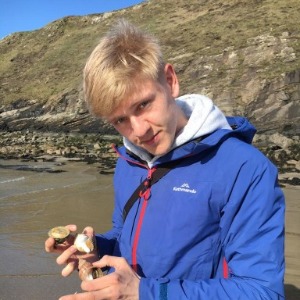Feb 22, 2022
Keio Acute Single-Worm Tracking
- 1Imperial College London

Protocol Citation: Saul Moore 2022. Keio Acute Single-Worm Tracking. protocols.io https://dx.doi.org/10.17504/protocols.io.b5fqq3mw
License: This is an open access protocol distributed under the terms of the Creative Commons Attribution License, which permits unrestricted use, distribution, and reproduction in any medium, provided the original author and source are credited
Protocol status: Working
We use this protocol and it’s working
Created: February 22, 2022
Last Modified: February 22, 2022
Protocol Integer ID: 58576
Abstract
In order to test how quickly C. elegans responds to the bacterial lawn, individual worms are gently picked onto 35mm petri plates a short distance away from the seeded lawn, and recording started immediately. Are there any differences between behaviour on BW control vs BW25113ΔfepD after only a few seconds-to-minutes on food?
Guidelines
The steps are not chronological. Please read the whole protocol before beginning.
Materials
30 x 35mm Petri plates (imaging plates)
3 x 60mm Petri plates (maintenance plates)
For 1L NGM agar:
- 3g NaCl (ref: fisher 447300010 )
- 2.5g bactopeptone (ref: BD 21167 lot 8270639)
- 17g agar (ref : A7002-5KG lot BCBM1702V)
- 1L H2O
- Salts (post-autoclave):
25mL KH2PO4, pH=6.0 (ref : SIGMA P0662-2,5KG)
1mL MgSO4, 7H2O (1M) (ref : SIGMA M5921-500G)
1mL CaCl2 (1M) (ref : SIGMA C5080-500G)
1mL cholesterol (5mg/mL) (ref : SIGMA C8667-5G)
For 1L LB broth:
- 25g LB powder (ref : fisher BP9723-500)
- 1L H2O
For 1L M9:
- 3g KH2PO4
- 7g Na2HPO4.2H2O (ref : SIGMA 71645-1KG )
- 5g NaCl
50mg/mL Kanamycin (in water, filter 0.2mm)
Before start
Prepare NGM agar and seed plates with BW25113 background strain for worm maintenance
Preparing maintenance plates
Preparing maintenance plates
Make 500mL normal Nematode Growth Media (NGM) agar, following the protocol
Protocol

NAME
Making normal NGM for imaging plates (Cabreiro Lab)
CREATED BY
Saul Moore
Pour 15mL agar into each of 3 x 60mm Petri plates ('maintenance' plates) and 3.5mL agar into each of 30 x 35mm Petri plates ('imaging' plates)
Leave to cool under a hood, then store at 4°C until used for seeding lawns
Preparing worms
Preparing worms
Using an eyebrow hairpick, gently pick 15 - 20 L4-stage N2 Bristol C. elegans onto each maintenance plate, and store in an incubator at 20°C (Monday)
After 24 hours, remove the adult worms, leaving the eggs behind to hatch into L1 larvae (Tuesday)
Bleach-synchronise the worms by performing an egg prep, following the protocol:
(Friday)
Protocol

NAME
Egg Prep for Bleach Synchronization (Cabreiro Lab)
CREATED BY
Saul Moore
At around noon the next day, wash L1 larvae off the empty plate with a few mL of M9 using a glass Pasteur pipette, and re-feed onto BW-seeded maintenance plates. Incubate at 20°C.
(Saturday)
Preparing bacteria
Preparing bacteria
Prepare two Erlenmeyer flasks with 50mL LB for inoculating a liquid bacterial culture of BW control and BW25113ΔfepD bacteria. Add 50mg/mL Kanamycin to BW25113ΔfepD flask
(Friday)
Inoculate from a single colony picked from streaked LB plates stored at 4°C, following the protocol:
Protocol

NAME
Inoculating a Liquid Bacterial Culture
CREATED BY
Priota Islam
Leave overnight in a shaking incubator (37°C, 200rpm)
The next day, remove the bacterial cultures from the shaking incubator, and prepare another two Erlenmeyer flasks each with 50mL LB, for inoculating a second round of overnight cultures. Only this time, do not add Kanamycin.
(Saturday)
Inoculate the second round of cultures by pipetting approximately 50μL bacterial culture from the first overnight culture. Leave in a shaking incubator overnight (37°C, 200rpm)
The next day, remove the overnight cultures from the shaking incubator, and store at 4°C until seeding imaging plates the following day
(Sunday)
Seeding imaging plates
Seeding imaging plates
Remove imaging plates from 4°C, and dry under a hood for 30 minutes to remove condensation. Remove the bacterial cultures from 4°C and leave on the bench for 30 minutes to acclimate to room temperature
(Monday)
Pipette 30μL of bacterial culture onto the centre of each imaging plate, taking care not to damage the agar with the pipette tip. Seed half of the plates with BW control, and the other half with BW25113ΔfepD
Leave the seeded plate to dry for 20 minutes under the hood, then transfer to a 25°C incubator and leave to grow for a further 7 hours and 40 minutes (for a total of 8 hours lawn growth time), before storing at 4°C for tracking the next day
On the day of tracking, remove the seeded plates from 4°C and dry under a hood for 30 minutes to remove condensation
(Tuesday)
Hydra Tracking
Hydra Tracking
Prior to tracking, ensure that the imaging cave air conditioning is turned on (and there has not been a power-cut) and also empty the dehumidifier waste water tray (see pre-imaging checklist)
(Tuesday)
Safety information
Normal temperature range: 19 - 21°C
Humidity: 35 - 45%
Remove the seeded imaging plates from 4°C and leave on bench top (with lids on) for 30 minutes to acclimate to room temperature
Remove the plate of age-matched (Day1 adult) worms from 20°C incubator
Using an eyebrow hairpick, gently transfer a single worm onto an imaging plate, a short distance away from the food lawn
Quickly transport the imaging plate to the imaging cave, place under the rig A1 position, and start the recording as soon as the worm approaches the edge of the food lawn
Worm behaviour was tracked for a total of 30 minutes (25 fps), and a 10-second blue-light stimulus was delivered every 5 minutes as a stressor to encourage an aversive 'escape' response in the worms
